Elevate Your Interactive Demos: 10 Creative Strategies for Maximum Impact

Head of Growth & Product Marketing
Interactive demos are no longer a “nice-to-have”. They’re often the first real impression a prospect gets of your product, but with so many teams using them, standing out takes more than just good design.
In this session with DemoDash’s Jason Oakley and Eric Holland, we explored 10 creative ways to make your demos more personal, memorable, and conversion-driven, from using storytelling and video to bringing real team voices into the experience.
Whether you’re revamping your demo flow or building your first demo center, these expert tips will help you elevate every click and scroll into a moment that sticks.
1. Personalize the Experience
When users share their information, use it to create personalized moments throughout the demo. Including their name in welcome screens and dashboard examples creates an immediate connection.
Nicholas Wealth excels at this by instantly populating the user's name and personalizing the UI, making prospects feel like the experience was created specifically for them.
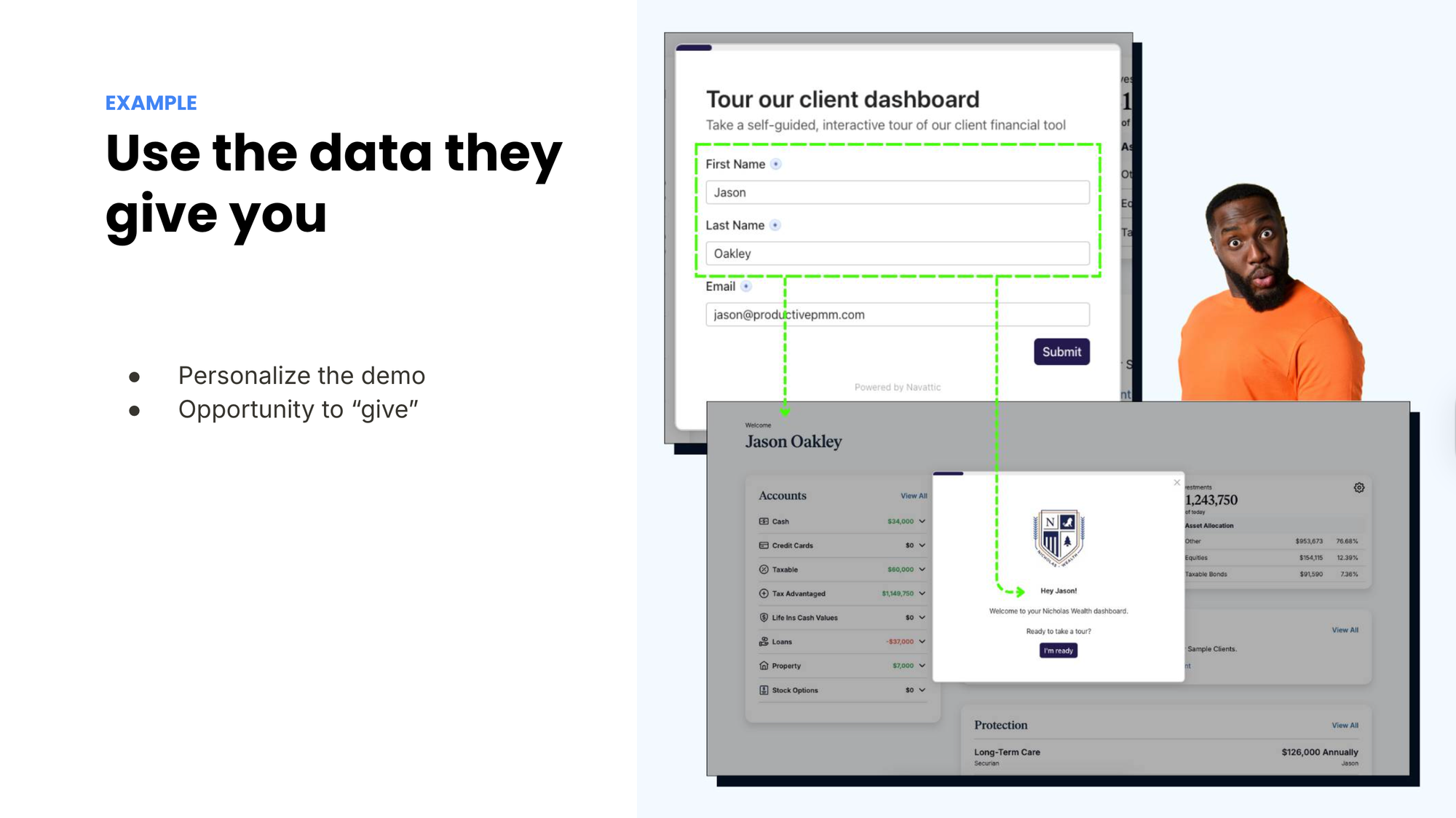
2. Place CTAs Throughout the Journey
"Not everyone makes it to the end. And so that is sometimes your only opportunity to convert people off a demo. What we say is don't leave CTAs till the end," explains Jason.
Implement sticky bars like Guru does to provide action points at every step. Create strategic "off-ramps" midway through the demo, giving users the option to book a meeting or sign up after key value moments, not just at the conclusion.
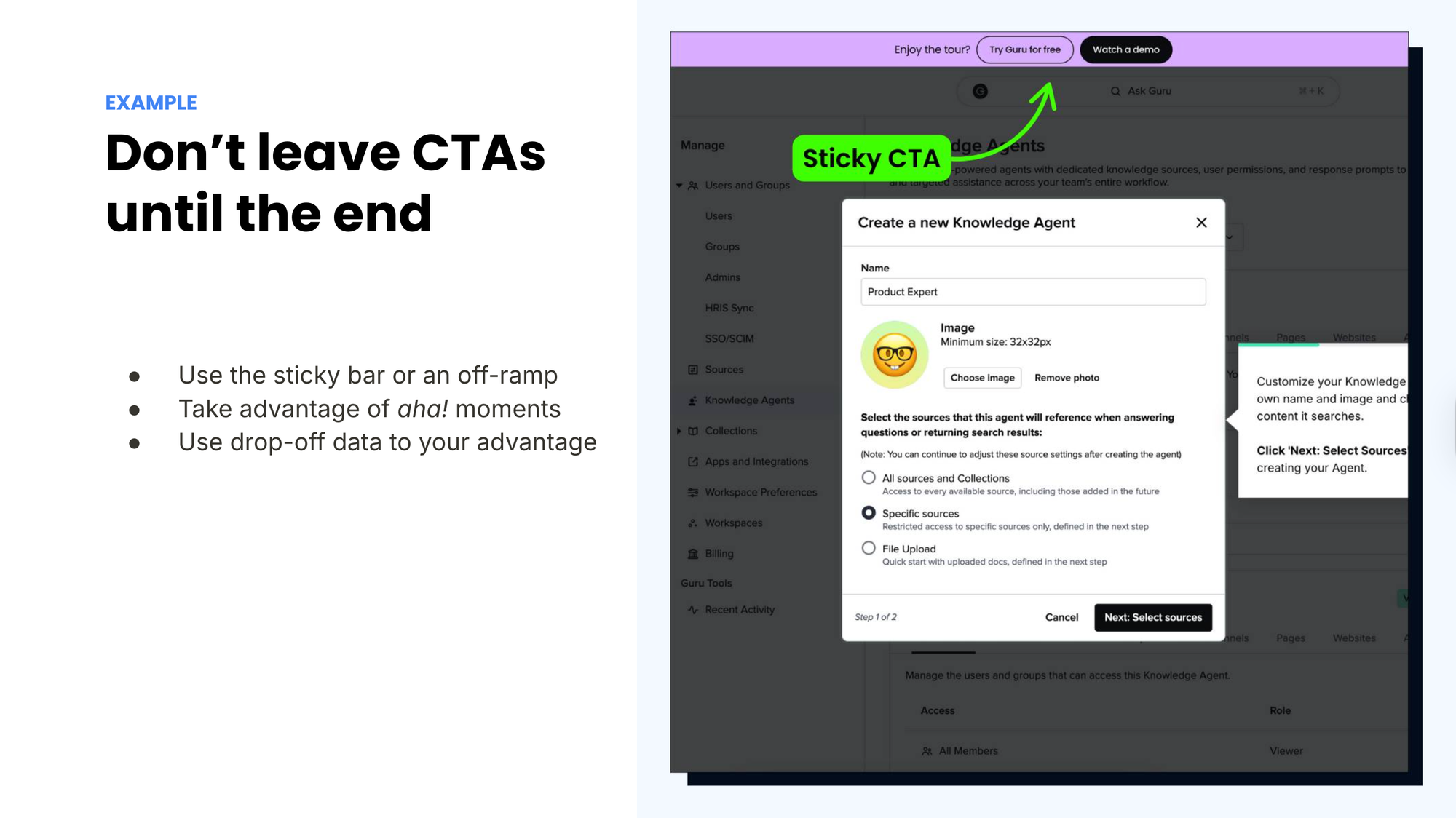
3. Showcase AI Features Through Video and Text Animation
When demonstrating AI capabilities, static screenshots often fall flat. Instead, incorporate high-resolution screen captures showing the AI in action.
This approach lets prospects see real-time responses and creates more dynamic, engaging experiences that better illustrate your technology's capabilities.
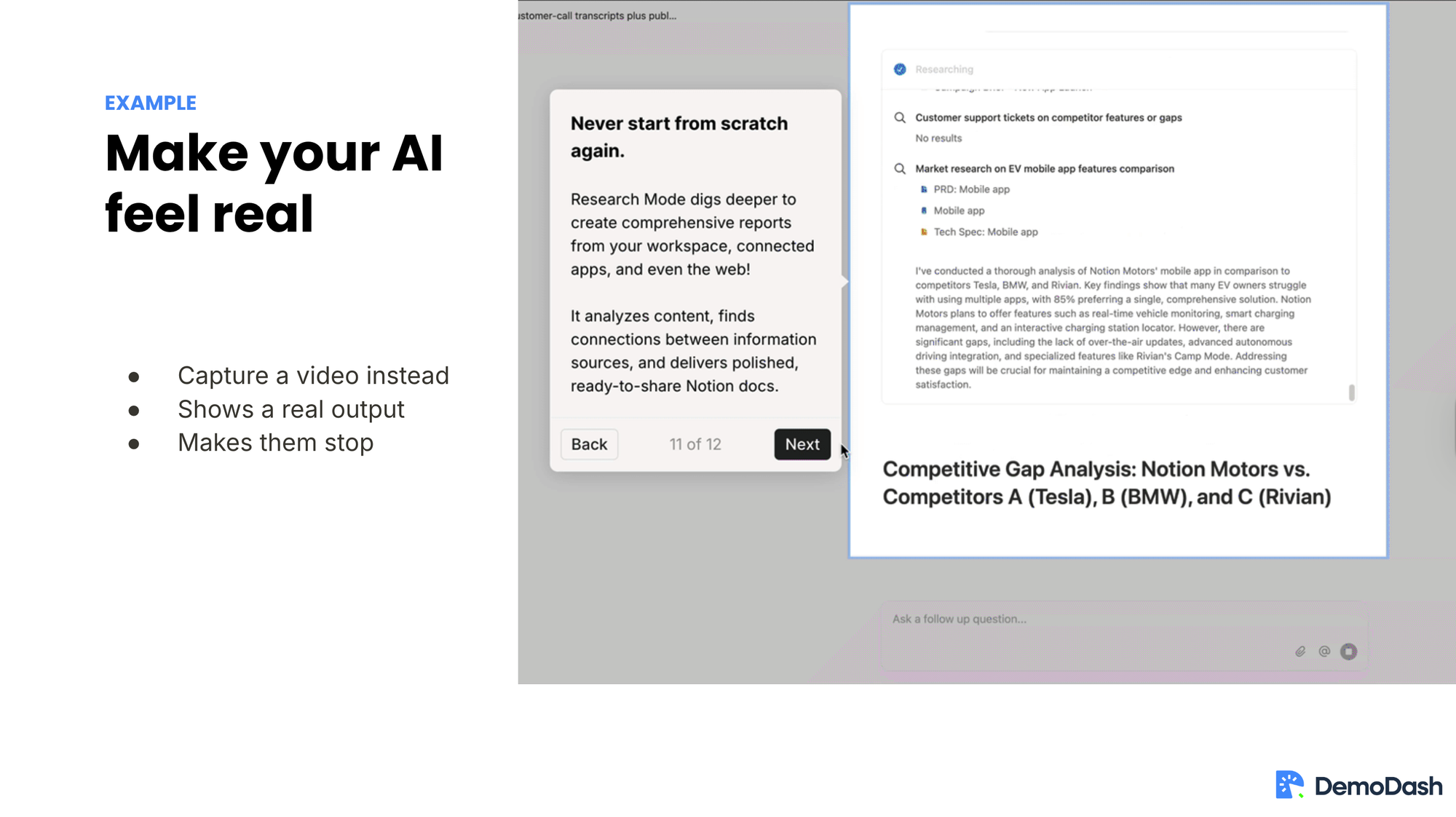
4. Introduce Character-Driven Storytelling
Frame your demo around a specific persona that resonates with your target audience. Rather than focusing solely on features, introduce characters like "John the Operator" or "Technician Robert" and build a narrative around solving their challenges.
"If you jump in and just add a character, naturally, it's gonna help you with that storytelling aspect because you're forced now to tell how this real human or fictional would do something with your product instead of just here's what this feature does, and here's why you should use it," notes Eric.
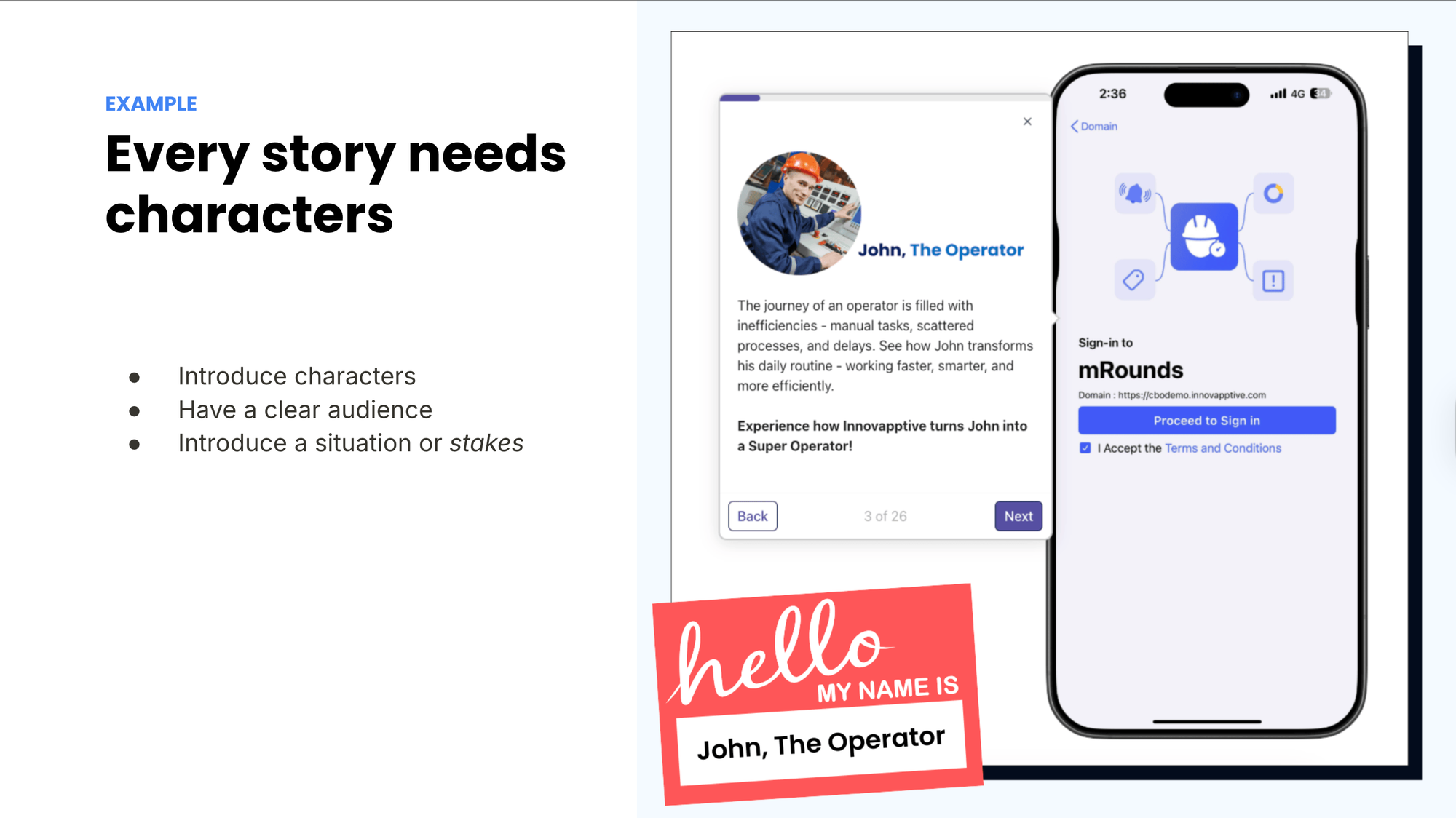
5. Use "Barbecue Language" That Feels Human
Avoid corporate jargon in favor of conversational copy that speaks directly to users. Lytho excels at this with friendly tooltips like "Spicy tip: you can add assets directly from the Lytho DAM with our integrated platform."
This approachable tone creates a more engaging, memorable experience that feels like a conversation rather than a presentation.
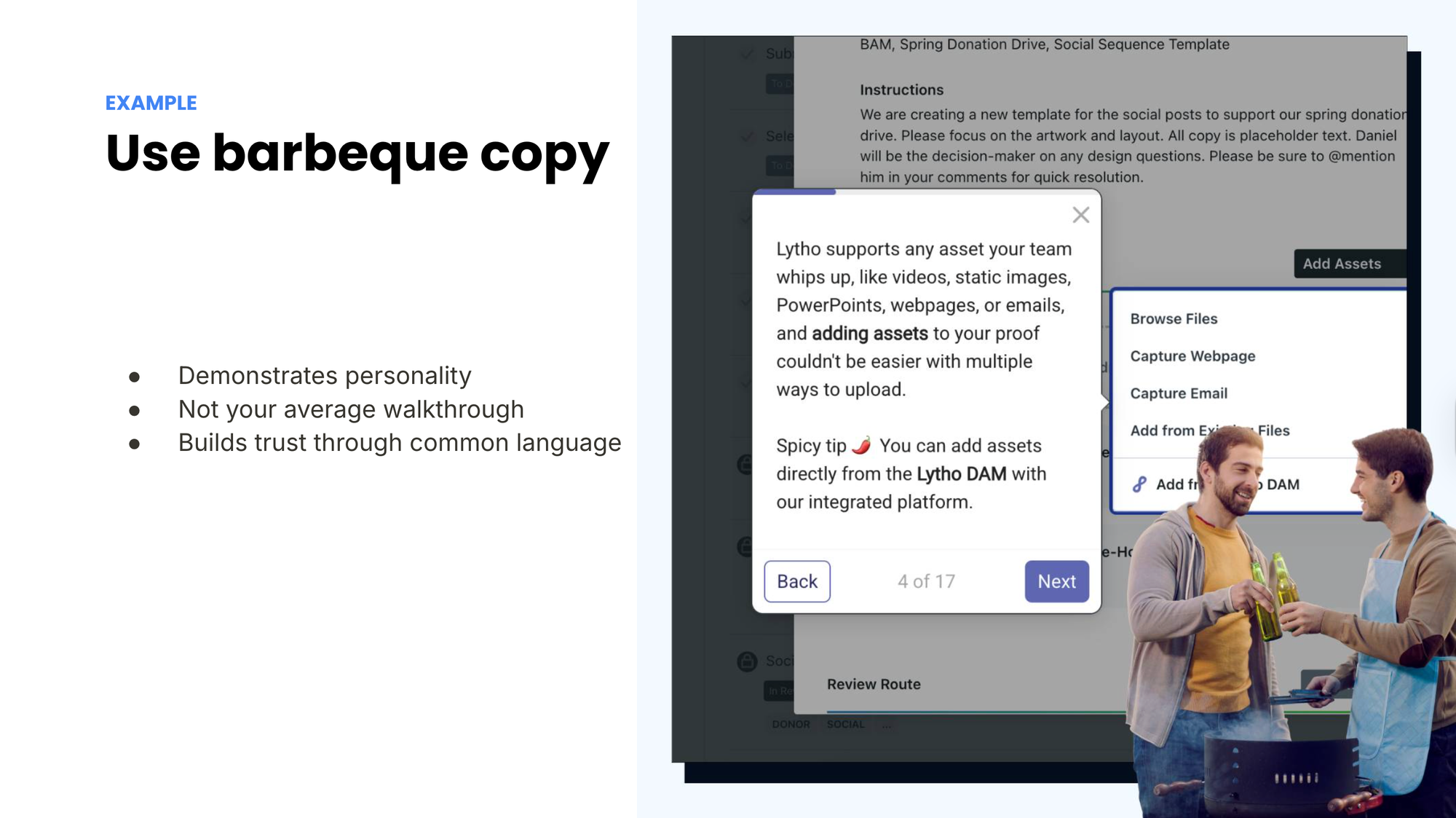
6. Set Clear Expectations Upfront
"Setting those expectations just kind of lowers people's barrier to be like, okay. I know how long it's gonna take me. I know what I'm gonna see. Alright. Let's do this," says Jason.
Let users know exactly what they're committing to before they begin. Visier effectively communicates "2 minutes, self-guided" in their demo call-to-action, while Kit outlines precisely what users will see in their "two-minute interactive demo."
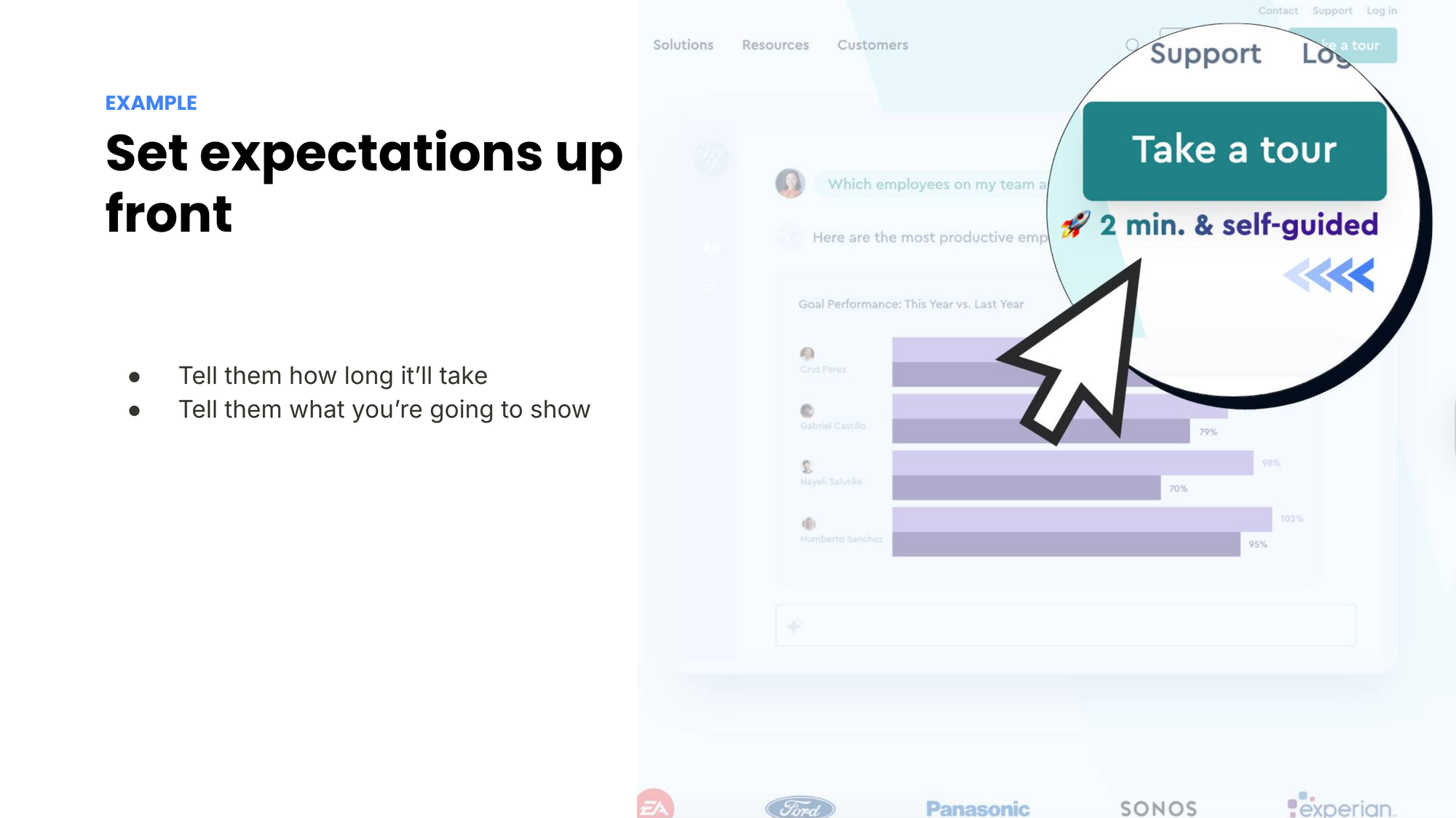
7. Create a Branded Demo Center
Organize your interactive demos into a centralized hub with distinct personality. Close.com excels with their branded "Demo Site" that thoughtfully organizes demos by persona and use case.
As Eric explains, "If you put all this work into creating a demo center, don't just call it your company's demo center. Give it a little bit of extra personality here."
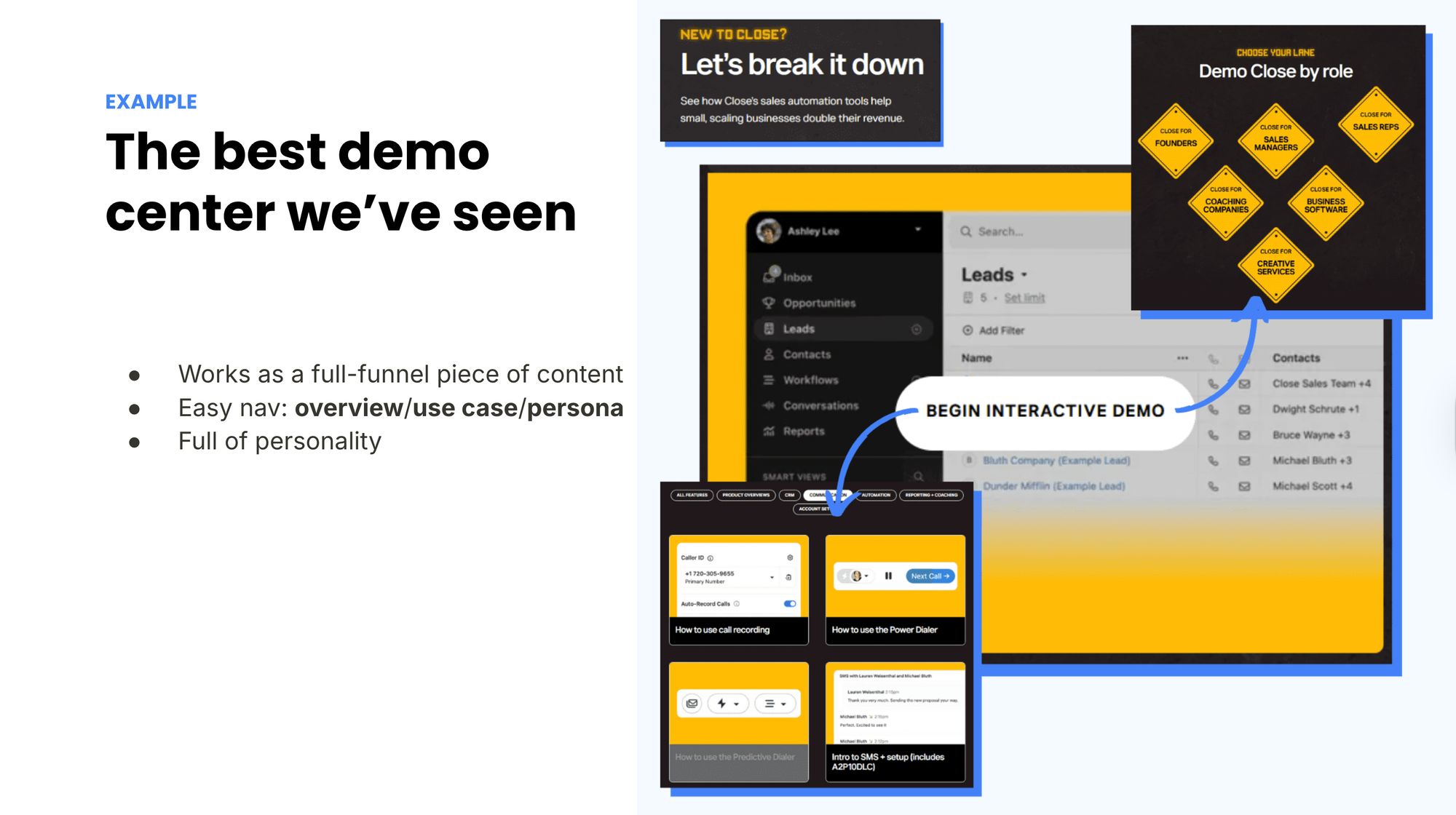
8. Let Users Build Their Own Experience
Implement interest forms that allow prospects to select which features or use cases matter most to them. This creates tailored experiences that focus exclusively on what's relevant to each user.
Not only does this provide better engagement, but it also generates valuable data about which aspects of your product resonate most with prospects.
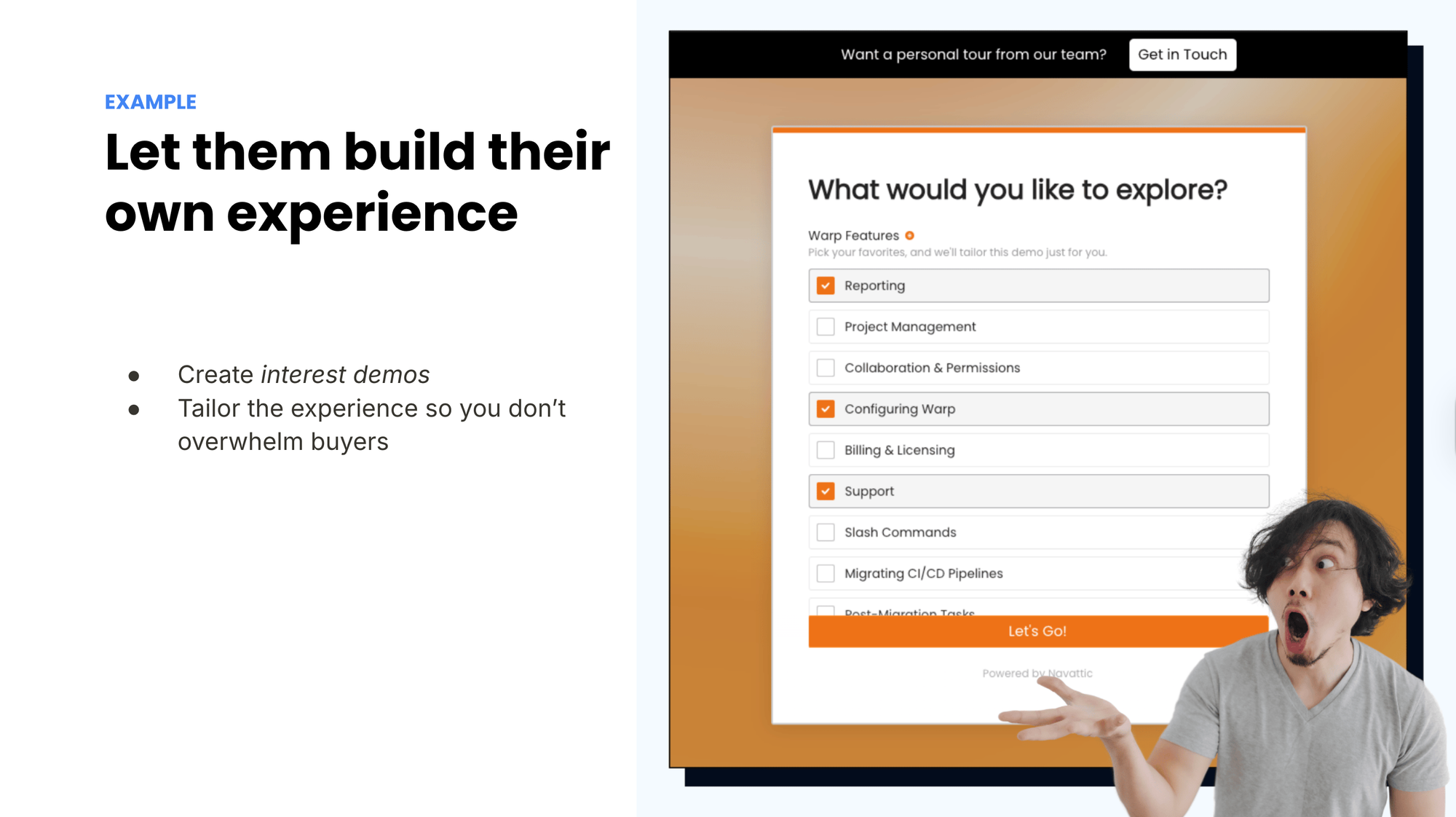
9. Include Video Introductions from Real Team Members
"We really like it because, one, we're humans talking to humans here. So it always gives that extra personal touch, especially if the next step is to go ahead and talk to that SDR or that AE," says Eric.
This personal approach builds connection before the first meeting and removes what Eric calls "this cold outreach feeling that you'd kinda get when you just get shipped a piece of content out of nowhere."
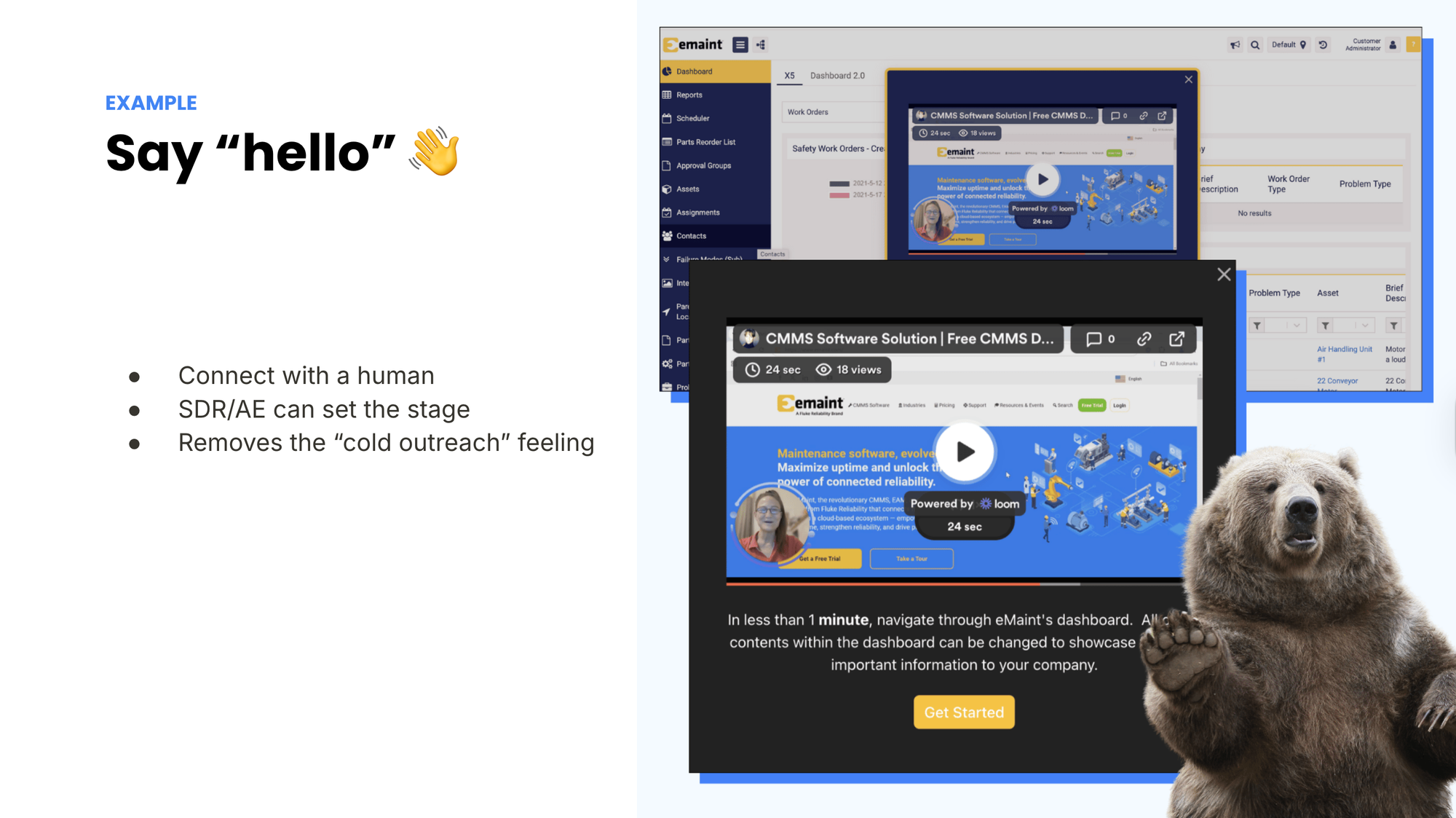
10. End with Proof, Not Promises
"I really love it as a trust-building mechanism as they wrap up and are trying to decide what's their next move," explains Eric about adding testimonials at the end of demos.
Unily effectively uses social proof in their final screen to reinforce confidence at the critical decision moment. This validation provides the final push prospects often need before taking action.
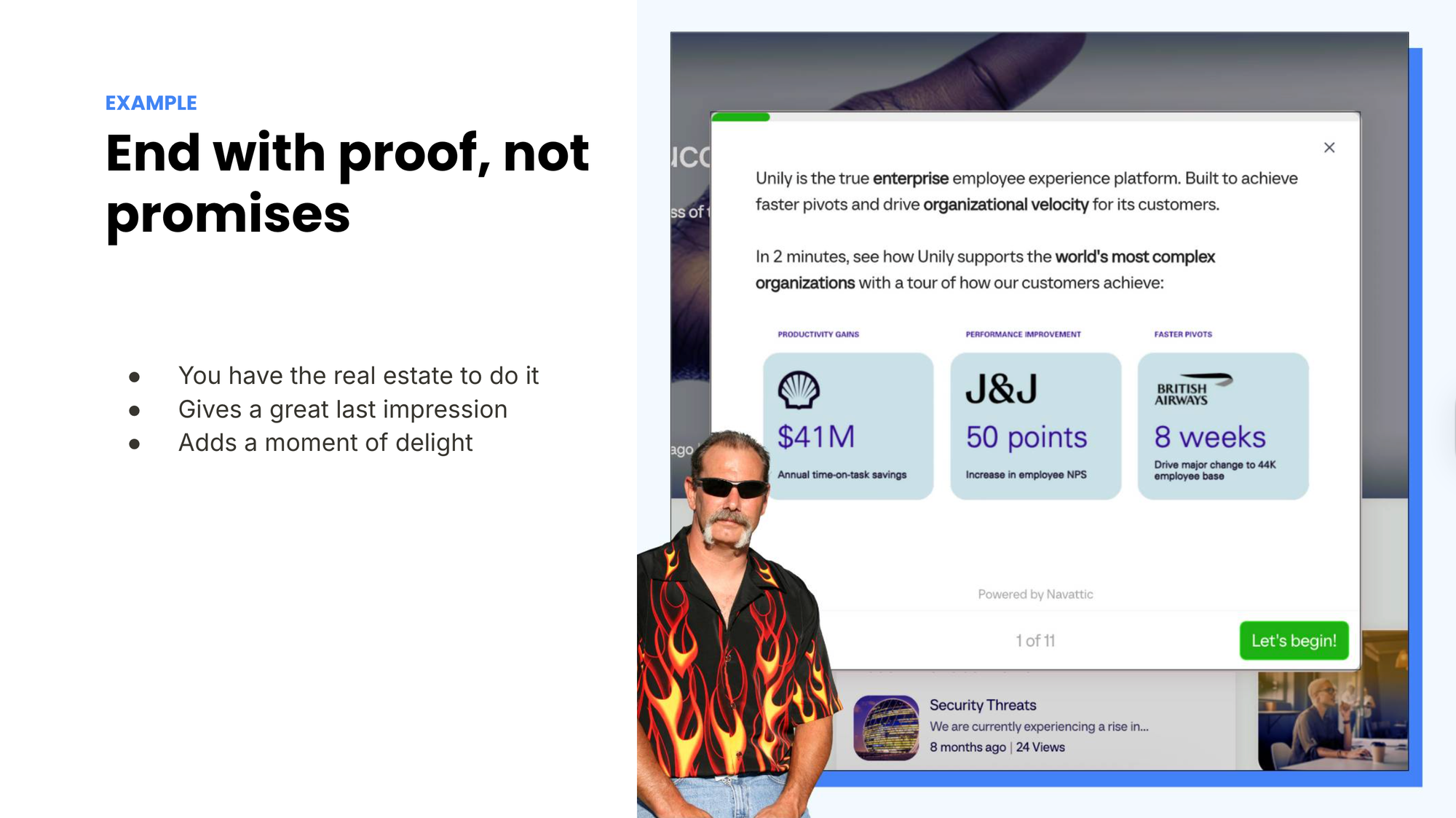
Looking for even more ways to make your interactive demos stand out?
Check out DemoDash’s Swipe File - a curated library of creative demo examples and tips from top SaaS teams.